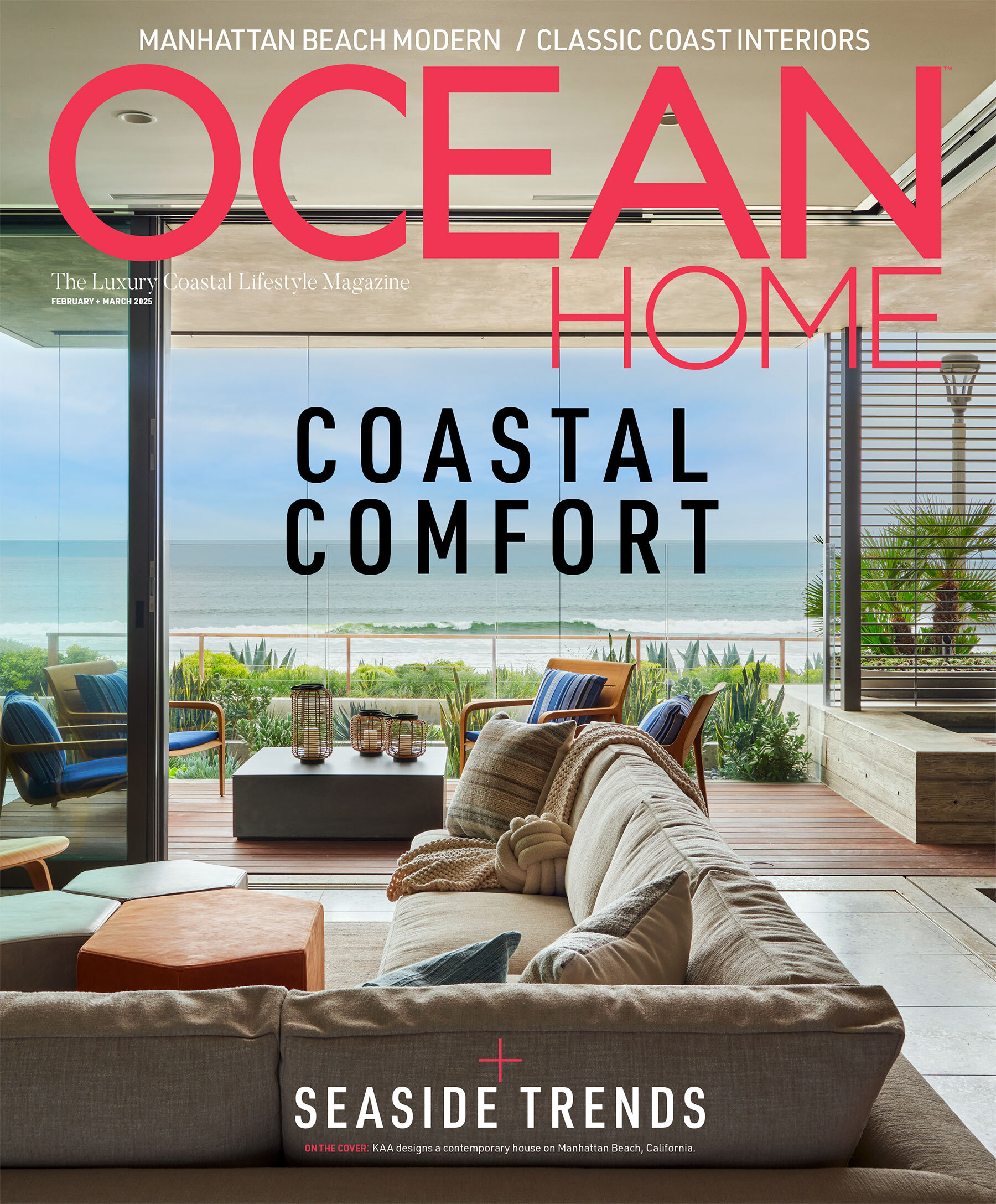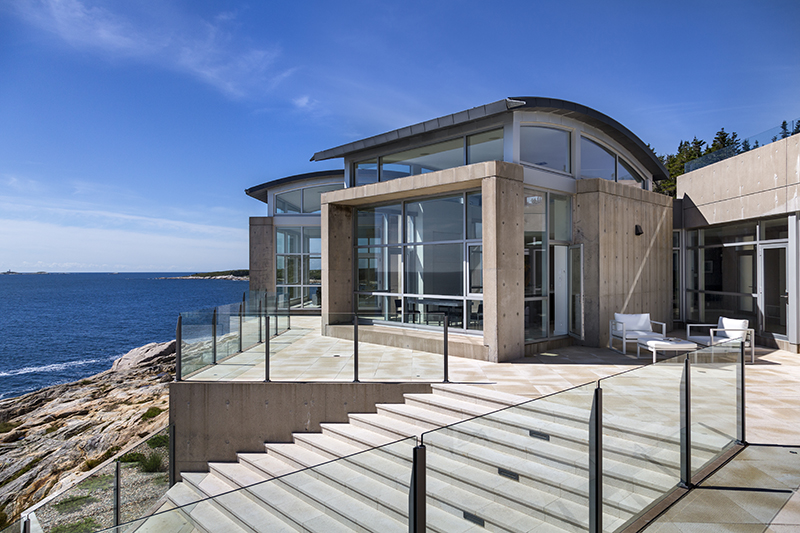There’s a drought in Southern California, high water in the Northeast and development pressure on Carolina’s Outer Banks. Residential footprints are shrinking on the Chesapeake Bay, but home sites in Florida and Puerto Rico are bigger than ever. And in the Hamptons, there’s a trend towards tearing down the walls between indoors and out, and creating spaces that open up one to the other.
These are the challenges driving the solutions that architects and landscape architects are creating for their oceanfront clients today. They’re the source of their genius and the genesis of their style – whether modern or inspired by other eras. Happily, one key to architectural success today is an economy that’s chugging steadily ahead. Trend-wise, here’s what eight leading ocean home designers are saying:
ARTECHO
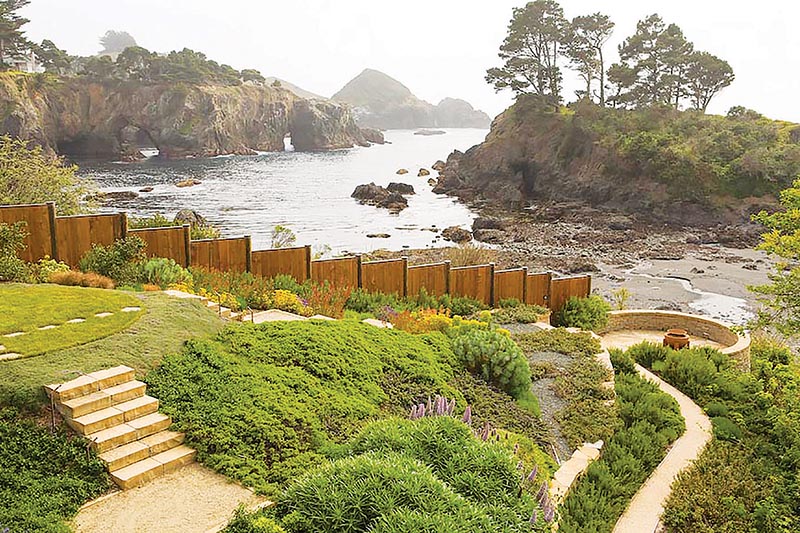 |
Changing climates demand more thoughtful choices. “On the West Coast, there’s the drought situation, so we’re now using plants that take very little water, and are native on the site,” says Pamela Palmer, principal for Landscape Architecture at ARTECHO in Venice, Calif.
“We’re using plants that are drought tolerant and happy in conditions with wind and water – plants from Chile, Australia, Africa and the Mediterranean region, such as southern Italy, France, Greece and Spain,” she adds.
“And we’re using them in both Northern and Southern California, choosing different plants for different parts of the state. Northern California gets rain but Southern California doesn’t. We choose plants that work whatever the climate.” artecho.com
Alexander Gorlin Architects
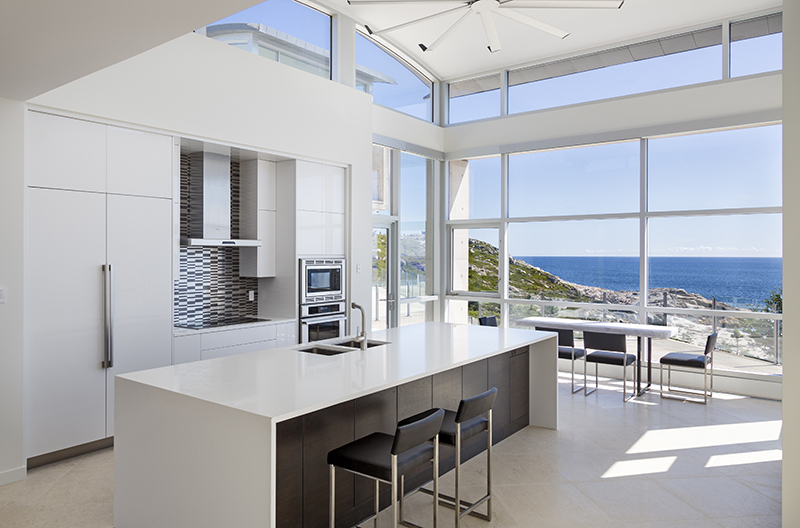 |
New regulations are also creating emerging trends. “FEMA heights have been raised for houses along the ocean in many parts of the country, because of major storms like Sandy,” says Alexander Gorlin, principal of Alexander Gorlin Architects in New York. “They’ve been raised as much as seven feet in Southampton, even for existing houses, for insurance purposes.
“The main trends are contradictory. There are houses being built on the ocean with enormous sheets of glass, which in a major storm would be blown away. They’re built with structural frames, and the glass getting blown out is accepted. It’s all for the views in between the big storms, and it’s contrary to what you’d expect.” gorlinarchitects.com
Charles Hilton Architects
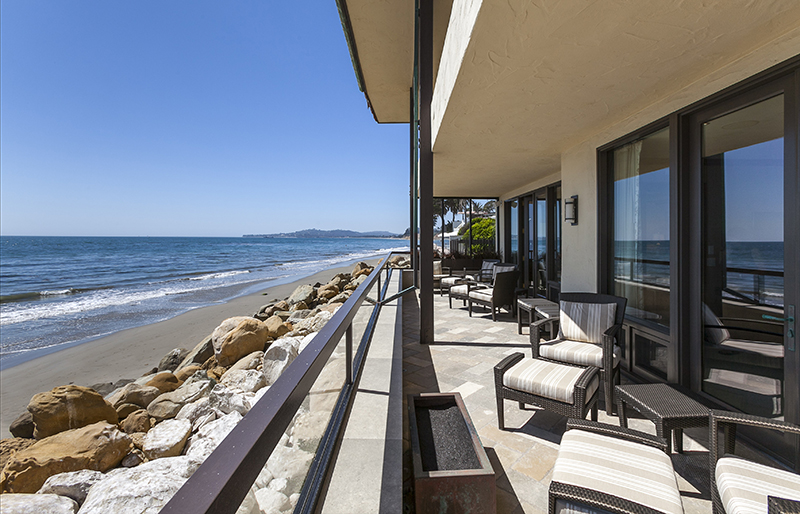 |
Charles Hilton, principal of Charles Hilton Architects in Greenwich, Conn., says trends in home exteriors are changing. “We’re seeing more durable materials that will better handle harsh coastal environments,” he notes.
“Nobody wants to paint their house every few years, so we’re using PVC for trim because wood takes a beating on the water, and it keeps maintenance costs down,” he adds. “We’re also using low-e (low thermal emissivity) coatings for coastal home windows and doors which offer better protection against solar gain and storm conditions.” hiltonarchitects.com
Clearscapes
?Steve Schuster, principal of Clearscapes in Raleigh, N.C., says the ebb and flow of the economy is a factor. “The overall trend here is that the economy is bouncing back, and the Outer Banks is such a desirable lifestyle destination,” he says.
“There’s pretty significant commercial development, and a major boom in very large rental cottages – 24 bedrooms in one house, almost like an inn. You can hold weddings on the beach, with family and friends staying in the cottage. It’s a high-quality and very attractive environment.” clearscapes.com
McInturff Architects
 |
“One major trend we’re seeing is compactness, given all the environmental constraints on a site,” says Mark McInturff, principal of McInturff Architects, based in Bethesda, Md. “A small footprint is the best thing to do. It disturbs the least amount of earth, particularly on smaller lots.
“My home on the Chesapeake Bay is on a small lot, and it had a house on it that limited my footprint. So I made a small incision into the land, and then piled on terraces, decks and a pool on top. So rather than occupy 50 percent of the lot, I occupy a tenth of it,” he adds.
“Height is the result and in some ways it’s wonderful. Up on top is a really striking place to be – the higher up, the better the views.” mcinturffarchitects.com
SB Architects
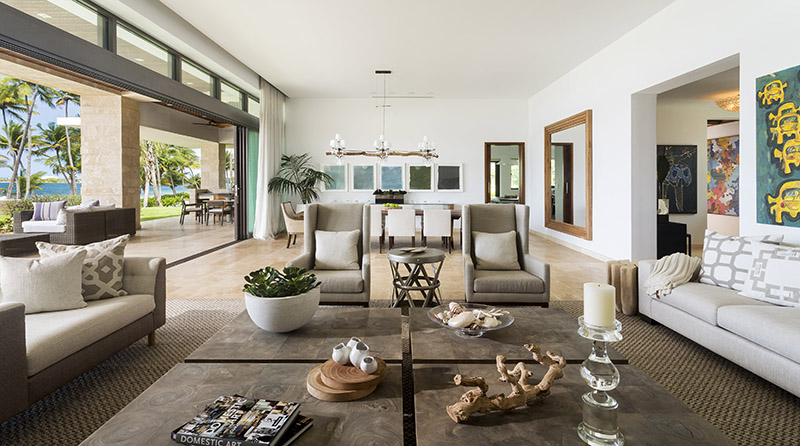 |
When it comes to coastal vacation homes and luxury residential communities, Scott Lee, principal and president of SB Architects in San Francisco, notes four defining trends – authenticity, experiential travel, multigenerational travel and wellness.
“They permeate all the projects we’re working on now, particularly the Ritz-Carlton Reserve at Dorado Beach in Puerto Rico,” he says.
“There’s also been a pendulum swing from historically referential to contemporary architecture. Today’s travelers are very experienced, better read, more affluent, and moving towards modern architecture.
“They associate classical and colonial architecture with the older generation. They’re forging out on their own. They’re not borrowing from the past, but doing something trend-setting.” sb-architects.com
Fairfax & Sammons Architects
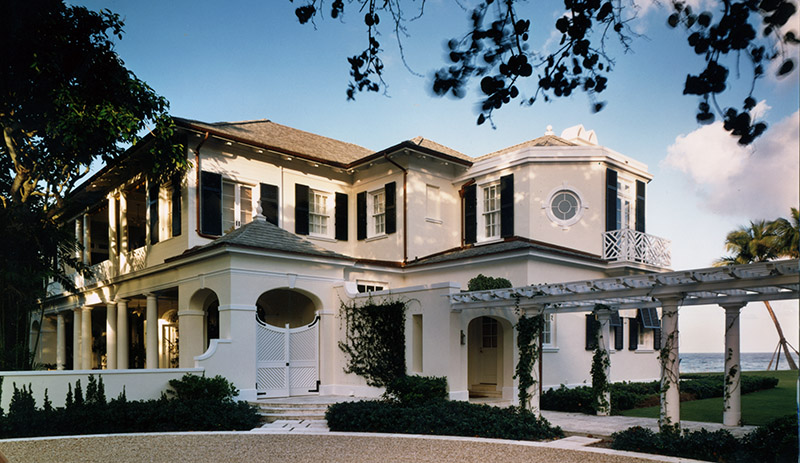  |
Architectural styles are also changing. “In Florida, there’s quite a lot of Key West Caribbean going on,” says Richard Sammons, principal of Fairfax & Sammons Architects in New York and Palm Beach. “People already have American Colonial or Caribbean furniture that fits well into the rooms, rather than Spanish or Italian.
“The Grand Mediterranean style is not as popular because there’s a lot of not-very-good Mediterranean out there. We’re doing one now, all in natural stone, with antique Italian fixtures from the Lorenzo Antique Fair and 17th and 18th century hardware. If you’re going to do that, you have to do it well.” fairfaxandsammons.com
Campion Platt
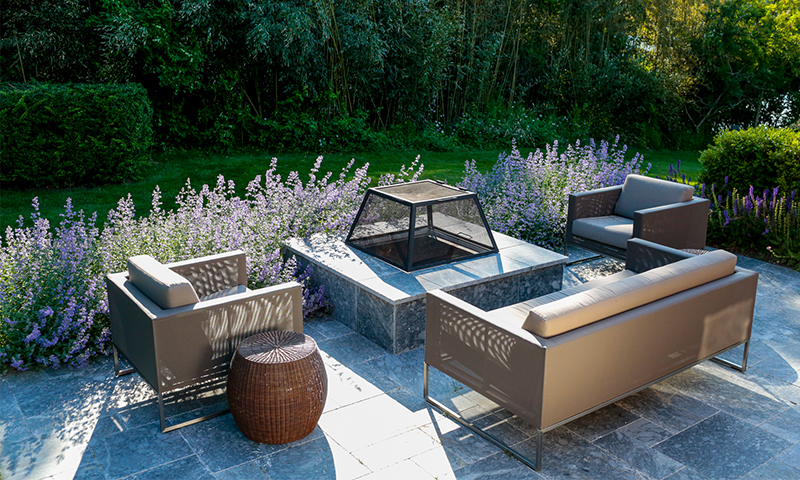 |
Campion Platt, principal of New York-based design firm Campion Platt, says ocean homeowners are moving outdoors. “People are thinking about expansion of interior to exterior, and de-materializing the exterior wall, so it becomes an ‘L’ shaped house, with screens and connecting doors,” he says.
“They’ll build a trellis or roof over an open area, so they don’t get wet in the rain, and enjoy the experience no matter what the weather is outside. It works in the Hamptons, but wouldn’t work in Florida where you don’t want to be outside all the time.
“We’re also adding landscape walls with a plaster finish, and you can project images onto it. The new technology means a really cool outdoor movie theater, with a nice projection system and speakers.” campionplatt.com
Image Credits: Photo by Peter Aaron.
